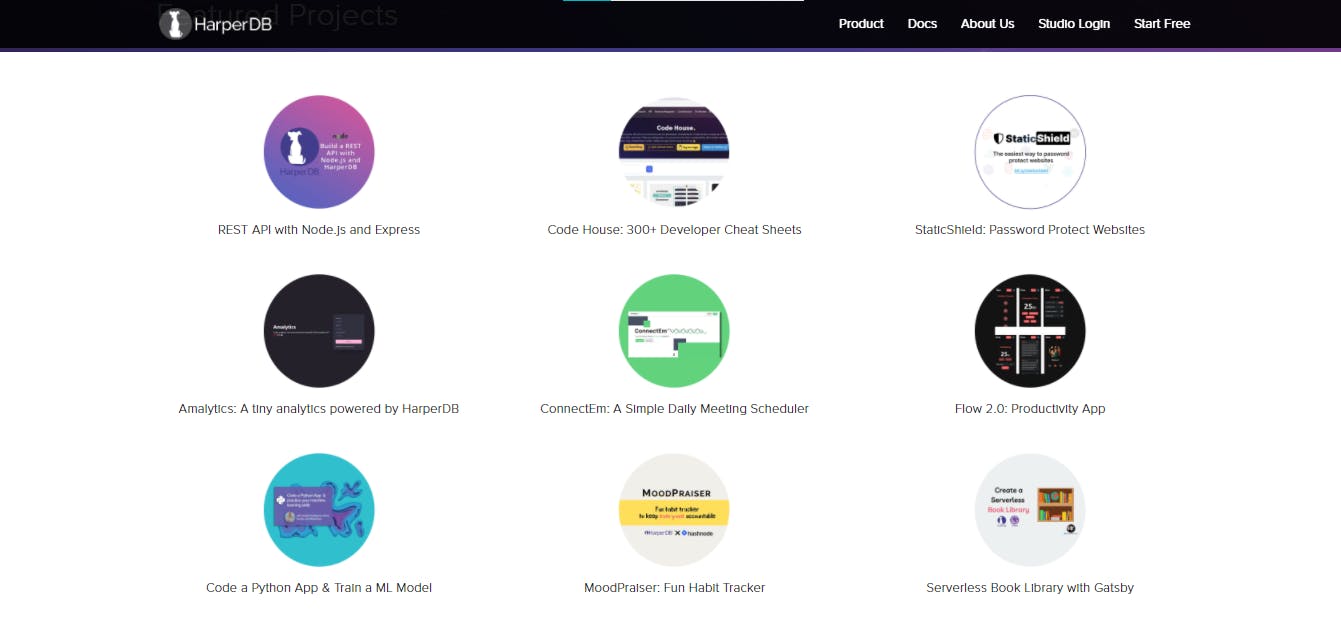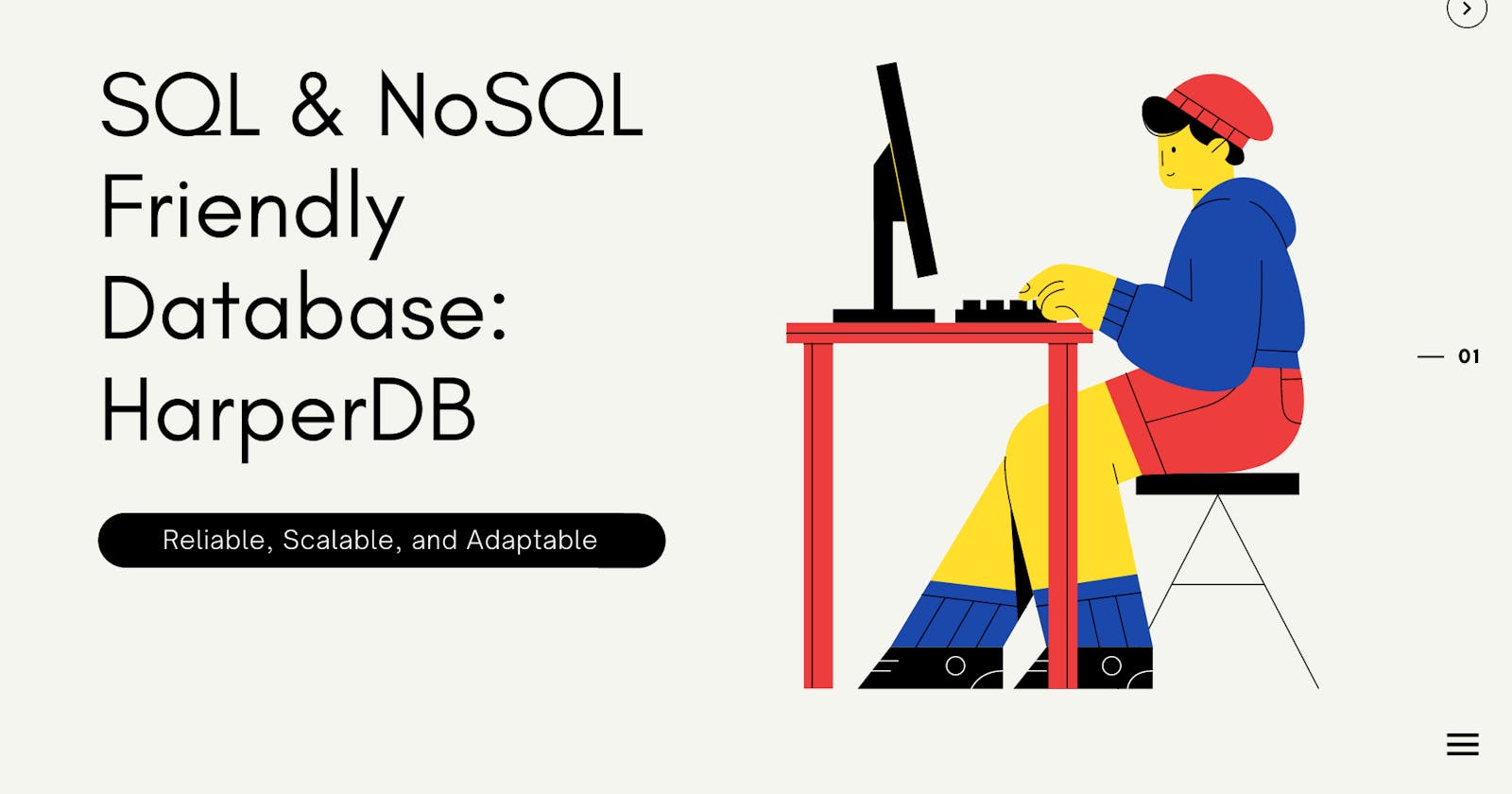Hey Readers 👋
In this article we'll be exploring the database that is designed to handle most workloads, eliminating the need for multiple products.
Okay, this sounds exciting, right? Let's meet the fastest & most flexible database on the market that enables Edge Persistence, Distributed Applications, Hybrid Cloud, & more.
What is HarperDB?
HarperDB allows developers to have a single database that is reliable, scalable, and adaptable. It is an easy-to-use and intuitive platform to manage your database instances on the cloud or locally. It is a geo-distributed database with a REST API and dynamic schema, that supports NoSQL and SQL including joins.
 It offers a great deal of flexibility in terms of database structure, user, role permissions, and data storage.
It offers a great deal of flexibility in terms of database structure, user, role permissions, and data storage.
SQL and NoSQL databases have their own uniqueness and many advantages, but there are limitations. And it is beyond frustrating that in order to get these paradigms working together you have to deal with an intricate architecture map with many moving pieces that are subject to failure and data loss.
Looking for a Peacemaker?
This is when HarperDB comes to the rescue.
Yo, everything sounds cool but what about the installation process?
To your surprise, HarperDB installs in minutes and does not rely on heavy configuration. HarperDB’s interface is a straightforward REST API that is powerful and easy to understand.
HarperDB - A fully indexed Database
HarperDB is fully indexed natively without requiring any configuration or increasing your storage footprint. This means that you can focus on coding your application and have access to the data you need at the speed you want without having to worry about complex configurations and crazy data models.
With HarperDB, you can create schemas and tables, describe schemas, insert, update, and delete, bulk load CSVs, and execute simple and complex queries. None of which requires the creation of indexes from the back end.
One of the most exciting features of HarperDB is the real-time SQL and full NoSQL CRUD features and capabilities.
Dynamic Schema
Do you know why schemas exist?
Schemas exist to contain objects and define structure. HarperDB's dynamic schema lives in an HTAP database with single-model architecture that’s fully indexed and can be accessed with both SQL and NoSQL.
Well, you no longer have to constantly rely on developers and DBAs to define the schema updates, test them, and then deploy. You can reduce a lot of overhead just by switching to HarperDB.
You might be thinking why go for HarperDB when there are already prolific databases in existence?
Okay, I understand! I had similar thoughts before I tried HarperDB.
To simplify this, Margo McCabe quoted in this article :
When it comes to products and technology, a lot of people ask “how are you different,” but different from what? You need some sort of baseline to start from, so you can say, “Similar to X, but different because of Y.”
We humans tend to compare stuff in order to know which one to pick, it's probably a natural instinct.
To be honest, these technologies are all similar in that they are used to store data, but each of them has its own uniqueness and the real deal starts when the similarities end.
MongoDB vs PostgreSQL vs HarperDB
You might've been through this comparison a few times. To keep it short, here are a few key points to ease your understanding of choosing the right database.
- MongoDB is a NoSQL Database. It is document-oriented and uses JSON-like documents under the hood to make querying extremely fast. MongoDB stores data as individual documents without regard to attributes.
- PostgreSQL, also known as Postgres, is a free and open-source relational database management system emphasizing extensibility and SQL compliance. Meanwhile, Postgres is not owned by one organization. So, it has had trouble getting its name out there despite being fully featured and comparable to other DBMS systems.
- HarperDB is a geo-distributed database with hybrid SQL & NoSQL functionality in one powerful tool (enabling SQL on JSON), accessed via a REST API. HarperDB can run anywhere presenting a single interface across all deployment architectures.
I was amazed to know that HarperDB globally replicates data at the speed of the Internet and is 38x faster than Top Competitors. HarperDB also just released Custom Functions which enables you to add your own API endpoints, with direct access to HarperDB core operations, to a standalone API server inside HarperDB.
Since then, my personal preference has been shifted to a single model database that is reliable, scalable, and adaptable - HarperDB.
Projects built with HarperDB
Incorporate HarperDB in your projects and power your app or project with HarperDB cloud.
Check out these cool projects 😍

Wrapping Up
Modern applications are easily deployed in a globally distributed paradigm, but the databases that power them often remain in a single cloud region, resulting in Internet latency delays caused by the application calling back to the database.
Move your data closer to the user: improve user experience and reduce cloud dependency with HarperDB.
To learn more about HarperDB, please visit harperdb.io or attend their upcoming event to code along and build your own app with HarperDB.

